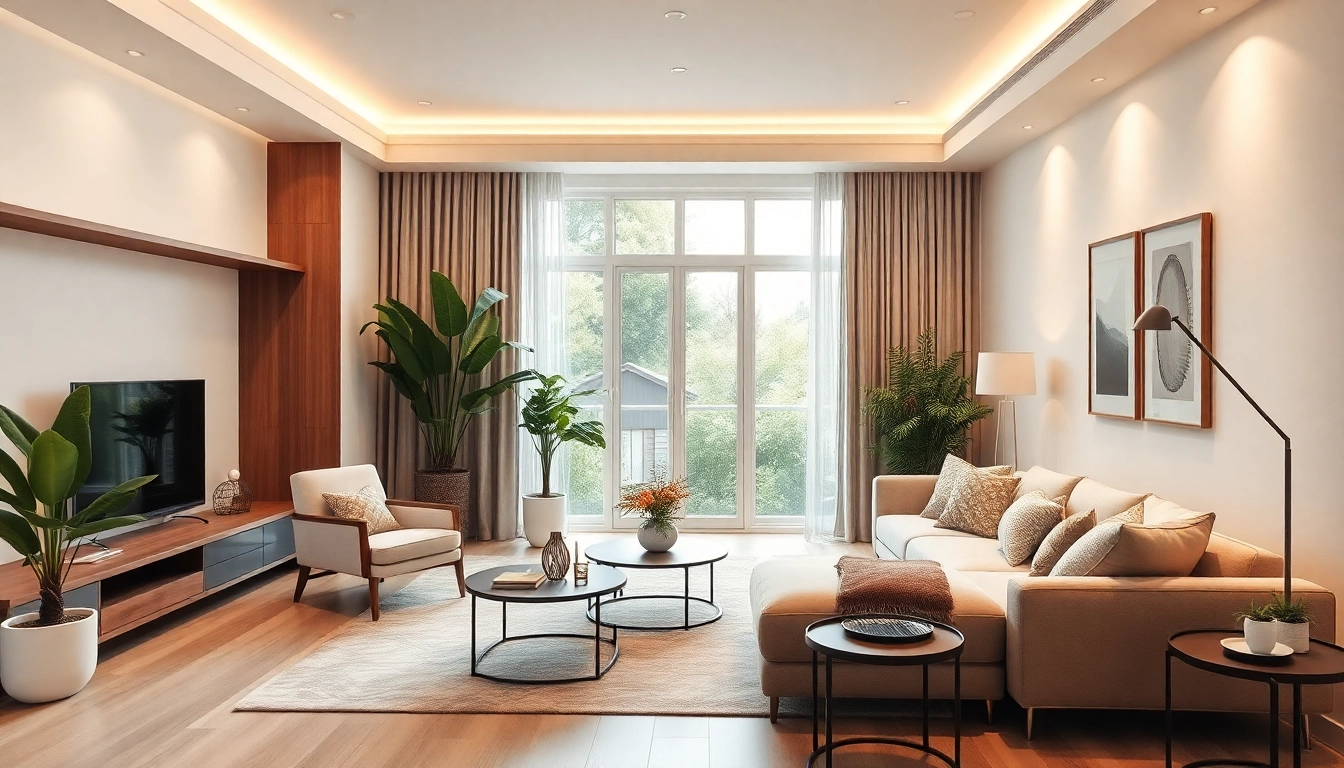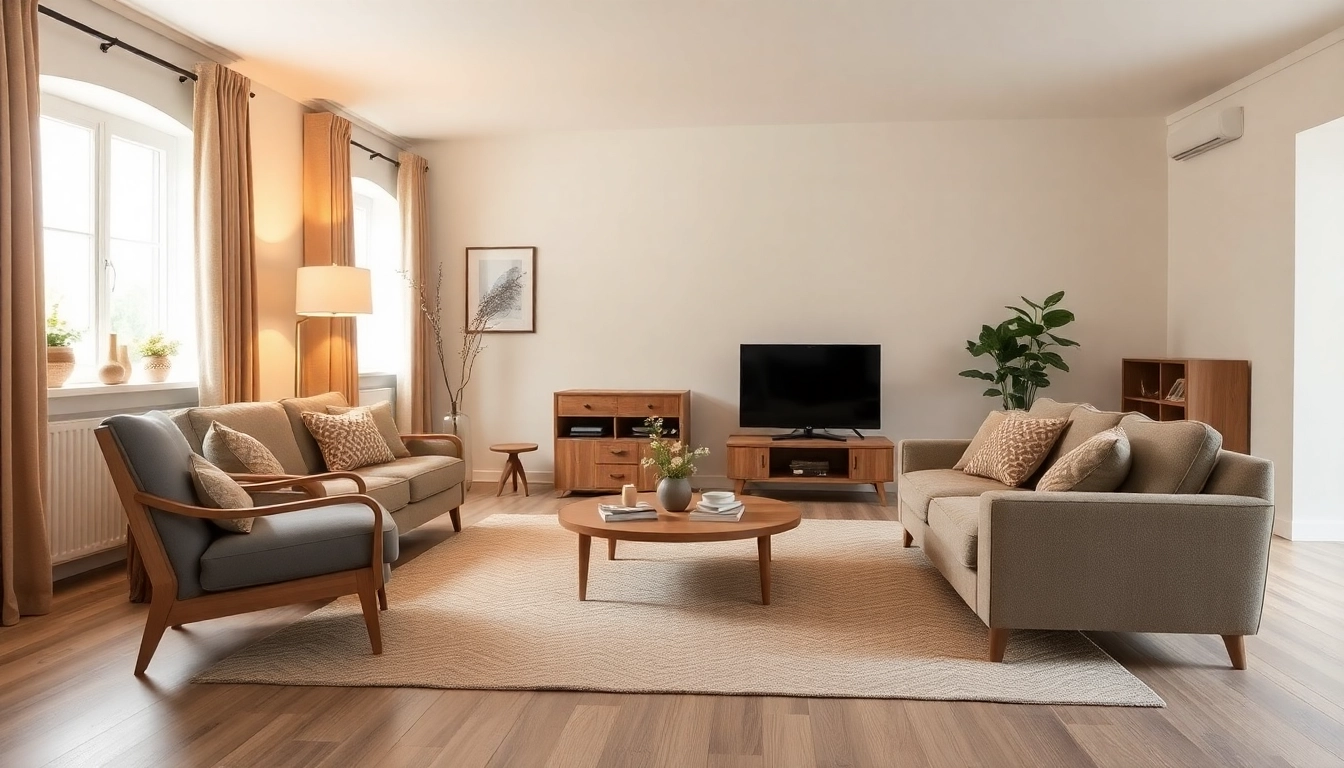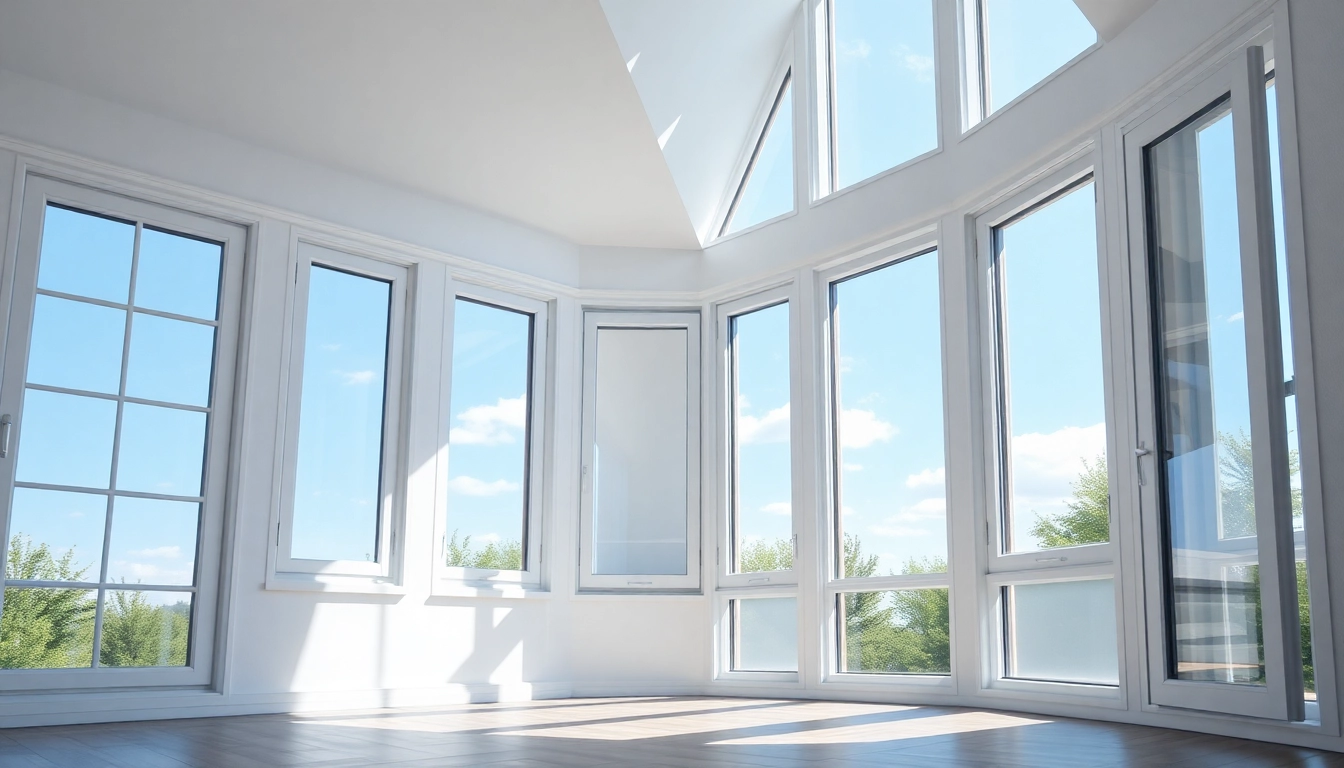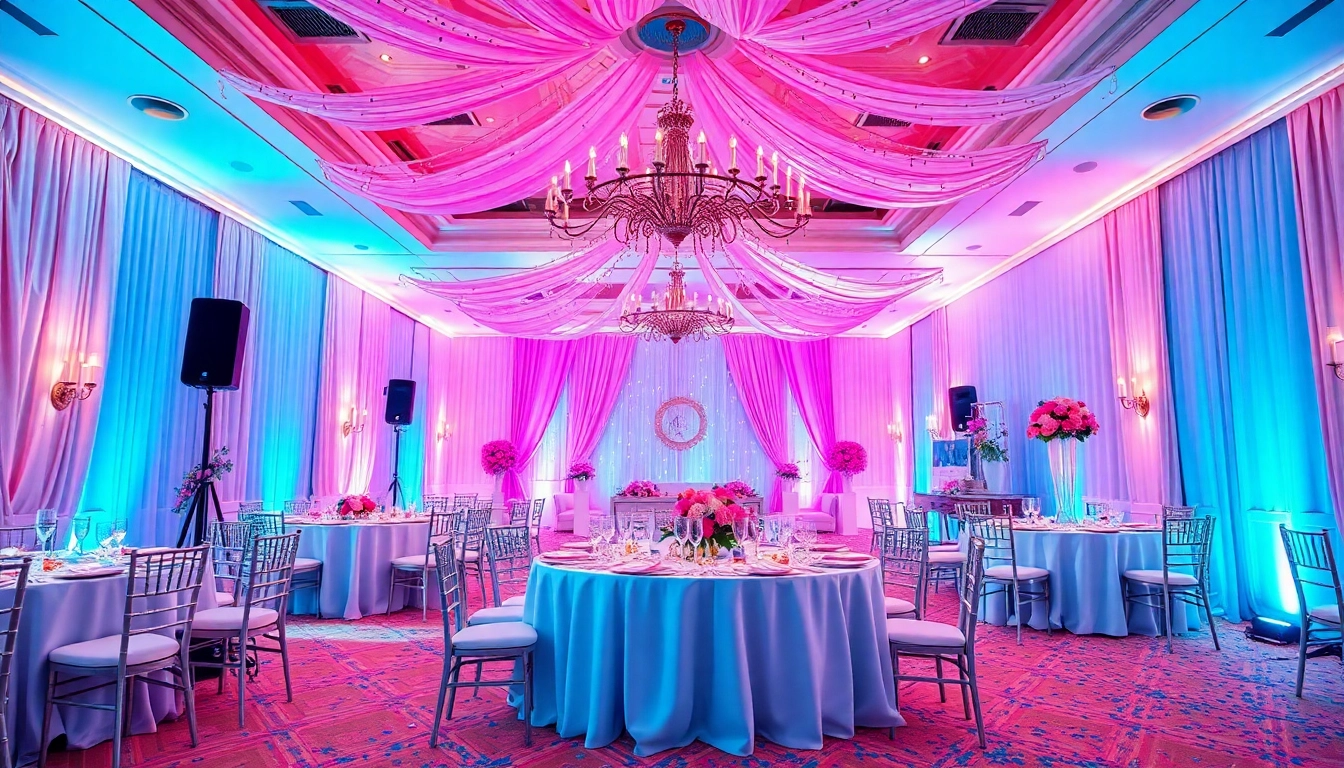
Understanding Entire Interior Design
What is Entire Interior Design?
Entire interior design refers to the comprehensive process of planning, executing, and maintaining the aesthetic and functional aspects of all spaces within a home or building. This approach emphasizes creating a cohesive environment that harmonizes with the needs and personal style of the inhabitants. The idea is to go beyond individual rooms and treat the entire interior as an interconnected whole, ensuring that colors, materials, and furniture choices flow seamlessly from one area to another.
This holistic perspective allows designers to consider how different spaces affect one another, leading to a more efficient and aesthetically pleasing living or working environment. From conceptual development and space planning to the final execution, the entire interior design process focuses on aligning each detail with the overall vision. For those looking to explore this concept further, resources on entire interior design can provide valuable insights.
Key Principles of Design
Successful entire interior design hinges on several fundamental principles:
- Unity and Harmony: Achieving a cohesive look through coordinating colors, textures, and styles in every space. This ensures that every part of the home feels connected.
- Balance: Distributing visual weight in the interior, whether symmetrical or asymmetrical, to create a sense of stability. This can involve arranging furniture and decor in a way that draws the eye evenly throughout the space.
- Proportion and Scale: Ensuring that furniture and decor match the proportion of the rooms and the height of ceilings. This avoids creating a cluttered or awkwardly feeling space.
- Contrast: Utilizing differences in color, texture, shapes, and materials to create interest and excitement. This helps prevent a monotone look and highlights key features or areas of focus within the design.
- Functionality: Maintaining practicality while emphasizing aesthetics. The design must meet the daily living or working needs of its occupants without compromising comfort.
Common Challenges Faced
While undertaking a holistic interior design project, several challenges may arise:
- Budget Constraints: Maintaining a balance between quality and affordability can be difficult. Careful budgeting and prioritizing essential elements of design can mitigate this challenge.
- Space Limitations: Working within an existing structural layout may necessitate creative solutions to optimize functionality and aesthetics. Designing with multipurpose furniture can be an effective strategy.
- Personal Tastes vs. Trends: Finding a balance between personal style and trendy design elements can be tricky. Homeowners should prioritize their preferences while being mindful of stylish yet timeless designs.
- Overwhelm from Choices: The sheer volume of decisions can lead to paralysis by analysis. A clear vision and defined style guide can help streamline the decision-making process.
Planning Your Entire Interior
Assessing Space and Needs
Before diving into the design process, it’s vital to assess the available space and its specific needs. This includes analyzing how the space is currently used, what functions are missing, and how each area can be optimized for daily activities.
Consider the following steps in this assessment:
- Conduct a Needs Analysis: Identify what you love and dislike about the current layout. Engage all family members or stakeholders to gather input to ensure everyone’s needs are addressed.
- Measure Your Space: Document the dimensions of each room, including windows and doors. This information is crucial for planning furniture and layout.
- Evaluate Natural Light: Understanding where light enters can influence color choices and layout. Prioritize areas that need more brightness or have unique lighting characteristics.
Choosing a Color Scheme
The color palette is one of the most critical aspects of creating a unified look throughout the interior. A well-chosen color scheme can enhance mood, influence the perception of space, and guide the overall aesthetic.
When selecting a color scheme for your entire interior:
- Start with a Base Color: Choose a neutral or calming base color that can run throughout the rooms. This sets a backdrop that can tie all elements together.
- Add Accent Colors: Incorporate one or two accent colors to introduce vibrancy and contrast. These can be used in decor, artwork, or furniture pieces.
- Consider the Flow: Ensure that colors transition smoothly from one room to the next, enhancing a seamless experience throughout the space.
Making Design Decisions
With assessed needs and a defined color scheme, the next stage is making deliberate design decisions regarding furniture and layout. This includes:
- Functional Layouts: Choose furniture arrangements that promote conversation and usability. For open-plan spaces, using rugs or furniture placement can help define different areas.
- Choosing the Right Furniture: Select pieces that reflect your style while offering comfort and practicality. Consider multi-functional furniture for smaller spaces.
- Incorporating Personal Touches: Use decor items such as artwork, photographs, and cultural artifacts to infuse personality into your design.
Implementing Your Entire Interior Design
Sourcing Furniture and Decor
Once you have a clear plan in place, sourcing the right furniture and decor is essential. This involves:
- Researching Vendors: Look for retailers that align with your style and budget. Consider a mix of high-street and bespoke brands.
- Trying Before You Buy: Visiting showrooms can provide a more honest view of how a piece will fit in your space.
- Keeping Sustainability in Mind: Investigate eco-friendly options that reduce environmental impact while fulfilling aesthetic goals.
DIY vs. Hiring Professionals
Homeowners often face the choice between undertaking DIY projects or hiring professionals. Here’s how to weigh your options:
- Consider Your Skill Level: If you have experience in design or handy skills, tackling projects independently may be rewarding.
- Cost-Effectiveness: DIY can save money, but be wary of potential expenses from mistakes. Sometimes, hiring a pro might be more prudent.
- Time Commitment: Successful interior design can take considerable time. If you’re short on time or overwhelmed, a professional can alleviate stress.
Exciting Trends in Interior Design
Staying informed about current trends can enhance your entire interior design experience:
- Biophilic Design: Integrating natural elements into interiors, such as plants and natural light, promotes well-being and connection with nature.
- Smart Home Integration: Incorporating technology for automation is becoming increasingly popular for convenience and energy savings.
- Sustainable Materials: A growing focus on eco-friendliness promotes the use of recycled and sustainable products.
Maintaining Your Entire Interior
Routine Upkeep Tips
Regular maintenance is essential to preserve the integrity and aesthetics of your entire interior design:
- Conduct Seasonal Inspections: Assess furniture, walls, and decor regularly to address wear and tear proactively.
- Deep Cleaning: Schedule deep cleaning for fabrics and areas that might not receive regular attention, keeping in mind your unique materials.
- Organize Regularly: Periodically declutter to ensure a clean, inviting atmosphere that reflects your personal style.
Seasonal Decor Changes
Refreshing your decor with the seasons can revitalize your interior and keep it exciting:
- Incorporate Seasonal Accents: Use colors, textures, and themes that resonate with the current season through decor and textiles.
- Change Soft Furnishings: Update cushions, throws, and curtains to reflect seasonal changes without major overhauls.
- Introduce Seasonal Flora: Plants and flowers can bring life to your home and enhance the seasonal ambiance.
When to Refresh Your Space
Knowing when to refresh your interior is crucial. Consider the following indicators:
- Changing Needs: As lifestyles change, so too may your space require updating to suit new functions.
- Aging Decor: If pieces feel outdated or worn beyond repair, it may be time to replace or revitalize them.
- Loss of Inspiration: If you find yourself uninspired or uncomfortable in your space, a refresh may restore joy in your home.
Inspiring Examples of Entire Interior Designs
Modern versus Traditional Styles
When considering an entire interior design, understanding the visual language of different styles is essential. Here’s a brief overview:
- Modern Style: Characterized by minimalism and open spaces, modern design employs functional furniture, neutral palettes, and the integration of technology.
- Traditional Style: Emphasizes classic furniture and rich textures, often incorporating ornate details and a warm color scheme.
- Eclectic Styles: Blending various styles brings personalized touches, allowing for unique and vibrant interiors that reflect individual tastes.
Case Studies of Successful Transformations
Examining real-world examples of successful transformations can inspire your design journey:
- Open-Concept Living Spaces: Many homeowners have transformed compartmentalized rooms into fluid living areas, optimizing space and promoting family interaction.
- Color Story Execution: A case study where a homeowners’ implementation of a cohesive color scheme resulted in a reinvigorated ambiance throughout their abode.
- Sustainable Transformations: Several projects have successfully utilized reclaimed materials to create stunning, eco-friendly designs that tell a story.
How to Get Inspired by Nature and Art
Bringing the beauty of nature and art into interior design can foster a sense of peace and inspiration:
- Utilizing Natural Elements: Incorporate stones, woods, and other natural materials, which can create a calming atmosphere reflective of the outdoors.
- Art That Resonates: Curate a collection of artworks that represent your personality and interests, serving as focal points throughout your space.
- Color Inspirations from Nature: Draw color palettes directly from nature’s beauty, allowing your home to breathe and feel more connected to the world outside.







